Streamlining manufacturing processes involves identifying and eliminating inefficiencies to improve productivity and reduce costs. It is beneficial in reducing unnecessary steps and the number of resources and time required to produce an item. It’s also easier to adapt to changes in demand or product design, allowing manufacturers to respond more quickly to market trends. Several Read more
Whats New
Streamlining manufacturing processes involves identifying and eliminating inefficiencies to improve productivity and reduce costs. It is beneficial in reducing unnecessary steps and the number of resources and time required to produce an item. It’s also easier to adapt to changes in demand or product design, allowing manufacturers to respond more quickly to market trends. Several steps can be taken to streamline manufacturing processes, including the following.
Identify bottlenecks
The first step in streamlining manufacturing processes is identifying bottlenecks or inefficient areas. Indeed, bottlenecks can cause delays and inefficiencies in the manufacturing process, leading to increased costs. Identifying and addressing bottlenecks can help to reduce these costs, so keep this in mind. Likewise, you can better plan and manage their resources, such as labor and materials, to ensure that production runs smoothly and efficiently. Fortunately, you can identify and address bottlenecks in various ways. For instance, you can analyze your production data and identify the process or machine that is consistently the slowest or lowest output.
Once you have identified the bottleneck, measure its performance using metrics such as throughput, cycle time, and capacity utilization. Also, study the issue to understand what is causing it to operate at less than optimal levels. Look for factors such as lack of maintenance, outdated equipment, or insufficient staffing. The next step is to prioritize solutions based on their potential impact and ease of implementation. Continuously monitor the issue to ensure that your implemented solutions have the desired effect. Make adjustments as necessary to improve performance.
Implement lean manufacturing
Lean manufacturing is a methodology that focuses on eliminating waste, reducing costs, and improving efficiency in the manufacturing process. Indeed, it can reduce lead times and improve delivery performance while increasing capacity and flexibility. Likewise, it improves product quality and eliminates defects, so keep this in mind. Employee engagement and empowerment can increase due to lean manufacturing. To get started, understand the entire process, from raw materials to finished goods, and identify the steps that add value for the customer. You can also create flow by arranging the process so that work flows smoothly from one step to the next, with minimal waiting or backtracking.
Experts also advise implementing a system where production is based on customer demand rather than forecasts or schedules. While at it, continuously improve the process by eliminating waste and finding new ways to add value. For instance, you can leverage manufacturing processes like just-in-time (JIT) production, kanban systems, precision machining, and visual management to improve product flow and reduce waste.
Automate processes
Automation can limit the need for manual labor, improve accuracy and consistency, and increase production rates. The first step is to identify and prioritize the processes that can be automated. Next, choose the appropriate automation technology for the task, such as robots, conveyors, or programmable logic controllers (PLCs). Robotics and automation technologies, such as CNC machines, are beneficial, so feel free to leverage them. To make it easier, implement a system for monitoring and controlling the automated process. You also want to train employees on the new system and procedures and test and fine-tune the system before full implementation, so keep this in mind. Consider integrating the automation system with other systems, such as ERP or MES, to streamline data flow and decision-making.
Manage inventory
Effective inventory management can reduce costs and improve efficiency in the manufacturing process. And you can achieve this by implementing an inventory management system. This can help you track inventory levels, set reorder points, and generate reports to monitor performance. Consequently, regularly conduct inventory audits to identify any discrepancies in your inventory and make adjustments as needed. Various techniques can make inventory management easier, so you can leverage them. For instance, just-in-time (JIT) inventory management is ordering and stocking items as needed rather than keeping large amounts of inventory on hand.
This can reduce storage costs and minimize the risk of stockouts. Alternatively, a kanban system is a pull-based inventory management method that helps you to only produce or order the items that are needed at the exact time. You should also optimize storage space and implement a FIFO (first in, first out) rotation policy to ensure that older products are used before expiration.
Reduce downtime
Downtime can be a significant source of inefficiency in the manufacturing process. Moreover, you risk losing customers if it becomes frequent. Therefore, finding ways to reduce downtime is essential. And you can achieve this by implementing preventative maintenance to prevent equipment failures and unexpected downtime. You can also improve equipment design and layout to minimize downtime caused by bottlenecks and congestion. Again, automation can help reduce downtime caused by human error and improve overall efficiency, so keep this in mind.
It’s also important to monitor production closely. This way, you can identify potential problems early and take corrective action before they cause significant downtime. Prioritizing communication between all departments and shifts can help identify and resolve issues quickly. While at it, collect and analyze data on production and downtime to identify patterns and trends that can be addressed. Experts also advise keeping spare parts on hand. This way, you can reduce downtime caused by equipment failure. Continuously look for strategies to improve processes and procedures to achieve success.
Embrace technology
Advancements in technology such as IoT, AI, and machine learning can help streamline manufacturing processes by providing real-time data analytics, predictive maintenance, and more efficient use of resources. These technologies can be used to optimize production schedules, improve machine performance, and reduce the need for manual labor. However, you must ensure that the technology can integrate seamlessly with existing systems and equipment to minimize disruptions and costs.
It should also handle current and future production needs, adapt to different manufacturing processes, and be able to accommodate changes in production demands. As a tip, invest in technology with a good return on investment, as they are more cost-effective. It should be reliable and have a great track record of performance in similar manufacturing environments, so feel free to consider this. Some technologies are specifically designed for manufacturing and may have features or capabilities that suit your needs. Before investing in one, consider testing it on a small scale to evaluate its effectiveness and identify potential issues.
To make it easier, implement a system for monitoring and controlling the automated process. You also want to train employees on the new system and procedures and test and fine-tune the system before full implementation, such as ensuring your linear servos is functioning effectively, so keep this in mind. Consider integrating the automation system with other systems, such as ERP or MES, to streamline data flow and decision-making.
Employee involvement
Employees are often the best source of ideas for improving efficiency and reducing waste in the manufacturing process. Encouraging employees to participate in process improvement initiatives and providing them with the needed training and tools can significantly improve efficiency. For instance, training employees on equipment operation and maintenance can help prevent downtime caused by human error. Also, develop a culture of ownership by encouraging all employees to take ownership of their work and equipment. This can lead to a more proactive approach to downtime prevention. While at it, train your employees on the inventory management system and procedures to properly handle and track inventory.
It is important to remember that streamlining manufacturing processes is an ongoing effort and that there is no one-size-fits-all solution. And it is important to continuously analyze production data, identify areas for improvement, and implement changes as necessary. This can be done through continuous improvement methodologies such as Kaizen and Six Sigma, so keep this in mind.
The steps most effective for a particular manufacturing operation depend on the processes and equipment used. However, by following the steps outlined above and continually analyzing production data, manufacturers can work to improve efficiency, reduce costs, and increase productivity, so keep this in mind.

Do you agree that first impressions are important? That is something everyone knows. Almost everyone says it. Several studies have shown that people make decisions in just a few seconds, seven to be exact. Whether it’s a new client coming to your office for the first time or a high-quality job candidate coming for an Read more
Do you agree that first impressions are important? That is something everyone knows. Almost everyone says it. Several studies have shown that people make decisions in just a few seconds, seven to be exact. Whether it’s a new client coming to your office for the first time or a high-quality job candidate coming for an interview, you’ll want to show them what your company is best at.
You may have heard horror stories about clients who went to other offices, like how the receptionists didn’t care, the furniture was dirty, and the coffee was old. Or even not being able to find the office at all. If this sounds familiar. This is important because it says everything there is to say about your business. If you want your business to grow, you’ll have to spend time and energy getting these things right. Because if you don’t care about first impressions, people will think you don’t care about much of anything.
Make Sure Your Customers Know Who You Are
People can get a bad first impression of your website if they can’t find even the most basic information on it. It’s not much to ask for directions, a postal code, and a phone number. But sometimes designers get carried away and make websites that look nice but hide important information. As you look at the complicated page structures, you think to yourself, “Well, they don’t want to talk to me for sure!”
Phone numbers and directions should be easy to find and easy to follow on every page of your website. Also, please make sure that Sat Navs and Google Maps can read your postcode.

Look At Your Entrance
Even though it may seem obvious, first impressions are made in your reception area. You might be able to tell how busy a place is by how you are greeted when you walk in. It’s like entering a beehive. In a successful company, someone will ask you right away if you are okay, offer you a hot drink, and take care of you quickly and efficiently. Your business should be shown in the way your reception area looks. It’s a great chance to make a good impression, and you can say so much about it.
Clean Up Your Workspace
Take a look. Are your workplaces neat and clean? Does everything work, and does anything that’s broken get thrown away? This is not a good way to make a good first impression. It might show that your business is disorganized and messy. If that’s the case, how can you expect your clients to trust you to do the work right? Your outdoor space should be a part of trying to fix up your office. This is the first thing a customer or client will see about your business. Take a look at your parking lot. Is it full of trash? Are there holes in it? You should find out how much of a difference it can make to clean up the outside of your business. You may even need to consider concrete repair.
These are just three things you should pay attention to if you want to give your customers the best first impression. Do you have any more ideas that might help? Please tell us about them in the comments.

Underground storage tanks (USTs) are essential for storing petroleum products, such as gasoline and oil, but leaks from these USTs can be potentially hazardous to your environment and create costly cleanup fees that nobody wants to pay. To avoid encountering a UST leak, it’s essential to know what the common causes of them are so Read more
Underground storage tanks (USTs) are essential for storing petroleum products, such as gasoline and oil, but leaks from these USTs can be potentially hazardous to your environment and create costly cleanup fees that nobody wants to pay. To avoid encountering a UST leak, it’s essential to know what the common causes of them are so that you can be aware of any potential concerns with your UST system.
1. Quality of Installation
When it comes to UST systems, there is no room for error when it comes to the installation process. Poorly installed tanks can result in corrosion and other damage that may cause a leak. To avoid this issue, make sure you hire experienced installers who will take the time to install your tank according to all applicable regulations properly. Ideally, any UST should be inspected by a qualified professional during and after installation to ensure that everything has been installed correctly and securely, including the underground pipe installation method.
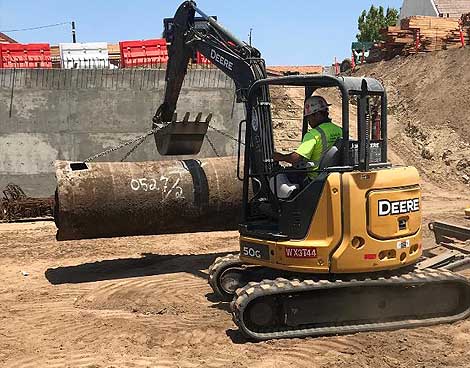
2. Poor Maintenance
Proper maintenance is essential to ensure that your UST system stays in good condition and continues to operate efficiently over time. Many USTs are equipped with a monitoring system, which you should inspect regularly to identify potential issues and ensure that the system is working correctly.
Regular maintenance should include inspecting the tank for any signs of corrosion or other damage and checking for any leaks in the piping and valves. Reputable underground storage tank removal services can handle every aspect of UST maintenance for maximum reliability and durability. Remember that USTs are often buried underground, so visual inspections may be complex. If you suspect there may be an issue, it’s best to contact a professional for help.
3. Corrosion
Corrosion is one of the leading causes of UST system failure. Corrosion can occur due to a variety of factors. Water exposure is a common cause of corrosion in USTs, as it can contain minerals and other substances that can react with the tank’s metal and cause it to corrode. Water can create a moist environment that promotes the growth of corrosion-causing bacteria.
Plasma spray coating is also an effective way to protect USTs from corrosion. This process coats the tank with a protective layer that helps prevent corrosion. Finally, it’s crucial to ensure that any piping or exposed parts are coated with a protective material such as paint or epoxy to prevent corrosion. If a UST is left unprotected, it can corrode quickly, resulting in costly repairs and potential contamination of the surrounding environment.
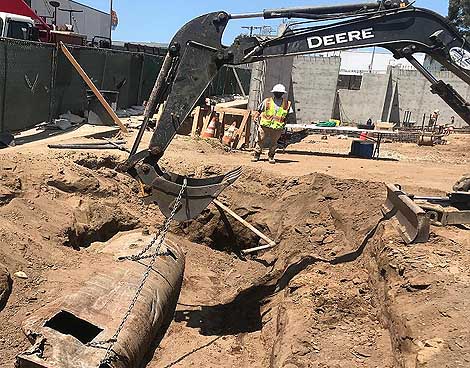
4. External Factors
External factors can impact the condition of a UST system. For example, changes in temperature or weather conditions can cause the soil around the tank to expand or contract, which can put pressure on the tank and cause it to crack or rupture. Earthquakes and other natural disasters can also cause damage to underground storage tanks. Additionally, if heavy equipment is driven over the tank, this can also cause it to crack or rupture.
It’s important to consider these external factors when deciding on a location for your UST system and ensure that the area is clear of any heavy traffic or potential hazards. Additionally, if you live in an area prone to earthquakes or other natural disasters, taking the necessary precautions to protect your UST system from potential damage is functioning properly.
You can also conduct regular inspections of your UST system to check for any signs of external damage. This includes checking the tank and piping for cracks, leaks, or corrosion. Additionally, ensure that the secondary containment system is in good condition and has not been compromised by changes in soil conditions or other external factors.
It’s vital to ensure that your UST system is regularly inspected and maintained to ensure that it stays in good condition. Regular inspections can help detect potential problems before they become too severe, ensuring the safety of the environment and your wallet. These steps will help ensure that your UST system continues to operate safely and effectively for years to come.
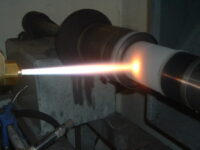
You may have heard about plasma spray, but when it comes to knowing what it is, you might need help understanding what it does and how it works. If you are new to plasma spraying and want to use it, then there is a lot that you need to understand, as it is a complex Read more
You may have heard about plasma spray, but when it comes to knowing what it is, you might need help understanding what it does and how it works. If you are new to plasma spraying and want to use it, then there is a lot that you need to understand, as it is a complex job that should be done only after acquiring enough information.
Before starting, you must ensure you’re in a safe working environment that follows all the regulations. Follow regulations to avoid hazardous working conditions, which are dangerous for beginners and experts alike.
So, let’s get to business.
 Plasma Spraying: Explained
Plasma Spraying: Explained
Plasma spraying is a thermal process where a coating is applied by spraying heat-induced particles onto a substrate. These particles are usually in the form of powder. The powder is injected into the plasma flame. It gets heated, softens the particles, and is later sprayed onto the object or materials and left to cool off. Once the sprayed particles cool off, it forms a coating.
Plasma spraying is used to coat a wide range of products. It is a time-efficient method to coat any material without worrying about damaging it. Plasma spraying may not be suited for all kinds of products, such as objects with Teflon layers, but there is always a variety of thermal coating available for each kind.
How does it work?
The way in which a plasma spray works is quite easy to understand, as it is a simple process. But it does require quite a bit of expertise to handle. It is an engineering marvel that has made the coating process easier. But, working with a plasma spray requires some getting used to. Here is how the entire process of a plasma spray takes place.
In plasma spraying, a plasma gun is used as a flame source. To start the heating process, the plasma gun receives a source of plasma gas. A highly powered electric charge is used to create the plasma. An external supply powder is for powder coating. The plasma flame melts the powder in a special nozzle, after which the plasma spray gun creates an ultra-hot flame that creates the coating.
For a plasma spray to work, one needs the right environment and a lot of planning to ensure the coating is suitable for industrial applications. It requires expertise and experience to handle the work of a plasma spray.
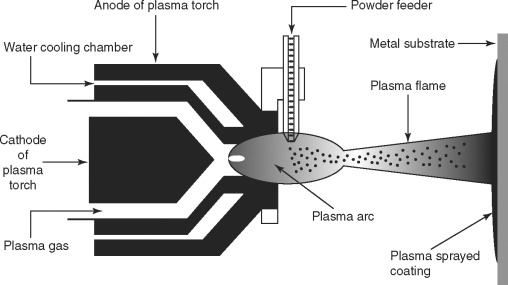
Benefits of plasma spray coating
Plasma spray is the most popular method for producing coatings on an object. The coating is specially designed for industrial applications. It is a huge time saver and provides results in a more time-efficient manner. The coating itself has many benefits, and the plasma spray makes it more reliable.
One major reason to go for plasma spray coating is that each part that goes through it becomes more and more durable. The part’s reliability and lifespan increase does save an extra cost for replacement. It makes them resistant to oxidation, thus, preventing wear and tear. It also provides thermal insulation, along with protecting them from corrosion.
Plasma spray is capable of covering a wide variety of components of different sizes, both large and small. It also provides better temperature management, along with better electrical resistivity and conductivity.
Conclusion
Plasma spray coating is a magnificent method that can improve the quality of a product by a huge margin. It is one of the most popular and widely used methods for coating. It provides a lot of benefits. Although, it does require expertise and an understanding of the right environment. Only if it is done right can it successfully apply a thermal coating.
Machine breakdown can be a major obstacle for virtually any organization. It can result in bottlenecks that compromise production and worker safety. It also increases maintenance costs, penalties, unscheduled downtime, and other issues. The following tips are crucial for any organization working to prevent machine breakdown: Adherence to Manufacturer’s Instructions The technicians’ failure to follow the Read more
Machine breakdown can be a major obstacle for virtually any organization. It can result in bottlenecks that compromise production and worker safety. It also increases maintenance costs, penalties, unscheduled downtime, and other issues. The following tips are crucial for any organization working to prevent machine breakdown:
Adherence to Manufacturer’s Instructions
The technicians’ failure to follow the manufacturer’s instructions is one potential cause of machine breakdowns. It is astonishing to learn that many operators never examine machine instructions, and some aren’t even aware that they exist!
These manuals provide all the important information that technicians need for safe operation, including calibration requirements, checklists, troubleshooting advice, etc. It’s only natural that strict adherence to these suggestions will likely decrease malfunctions.
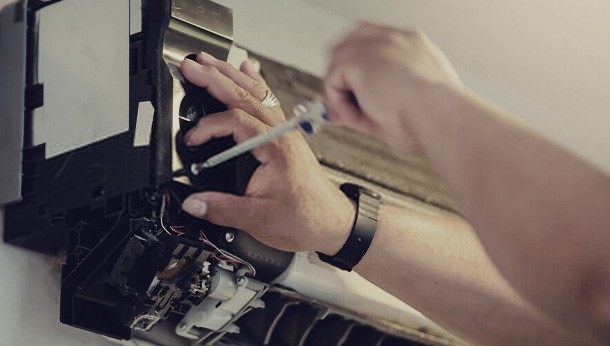
Train Relevant Staff Members
Heavy manufacturing equipment is significantly impacted by human error, which may result in unforeseen malfunctions and safety problems. Therefore, it is essential to train both technicians and machine operators to avoid unexpected equipment failure.
Also, the maintenance team should be highly knowledgeable about machinery components, while the operators should have sound instruction on how to utilize the production machinery safely and successfully. It’s crucial to have training sessions to make sure that all staff members are informed whenever upgrades or modifications are made to the equipment.
Additionally, businesses may conduct tests, interviews, or mini-examinations to determine how well their staff members are acquainted with the machinery.
Don’t Overwork the Equipment
Even the most high-performing component of a machine has limits. Many machines have a lifetime after which they may break down, lose effectiveness, or need replacement. Others provide specifics on how much work they can do. However, businesses that routinely push equipment to its limits risk shorter lifespans, breakdowns, overheating, unresponsiveness, or even early death.
However, businesses that routinely push equipment to its limits risk shorter lifespans, breakdowns, overheating, unresponsiveness, or even early death.
This one can be fixed quickly. Make sure that the workloads placed on your machines are less than the maximum allowed. Buying new equipment may be a safer and less expensive alternative if you need to achieve quotas or boost output since overworking existing equipment may result in costly delays and unforeseen machine problems. It’s far better to have a spare robotic stone saw waiting in the wings than it is to over-use your current one and end up with nothing at all.
Work on Preventive Maintenance
Preventative maintenance is carrying out actions in advance to reduce unplanned machine downtime and avert machine malfunctions. All machines require routine maintenance to keep them in good working order and spot potential issues before they occur. For instance, if a regular maintenance checkup reveals a problem with the equipment; technicians may then plan and start working to fix the issue before it gets serious.
Businesses that monitor, update, inspect, and repair their machinery often create the perfect environment for achieving objectives and minimizing downtime. Additionally, such firms may enhance maintenance management by using turnkey manufacturing solutions to keep pertinent machine information organized and everyone on the same page.
Create a Comprehensive Inspection Checklist
Unplanned downtime and more frequent failures are consequences of poorly maintained equipment. Therefore, to minimize this risk, establish a thorough inspection checklist. A detailed and structured inspection checklist will ensure that all required inspections are carried out, and that possible issues are immediately detected and resolved.
Making a thorough inspection checklist might require some work. However, the following guidelines will assist you to get going:
- Start with the fundamentals.
- Sort the list of items into categories.
- Put similar objects together.
- Determine which places need an inspection.
- When describing the regions you’re inspecting, use images or diagrams.
The following are specific items you should include in your inspection checklist:
- Equipment security features.
- Electrical components and wiring.
- Lubrication points.
- Belt tensions.
- Inventory of replacement components.
These are only a few fundamental beginning points; your inspection checklist should be as comprehensive as possible to fit your particular manufacturing process.
Be Proactive, Not Reactive
Reactive maintenance may be expensive since it causes production to stop and also creates bottlenecks. On the other hand, proactive maintenance considers staff observations of the environment and the state of the machinery to prevent minor difficulties from developing into major concerns. Monitoring the whole process and putting the data together to understand what’s occurring on the shop floor are the first steps in adopting a proactive mentality.
A proactive strategy represents a significant, extensive transformation. Also, it is less likely for an unforeseen failure to occur when a machine is operating at its best since it is smoother and makes fewer mistakes.
Conclusion
Machine breakdown is a menace to production because it affects more than just one stage of the process. A holdup in one area is likely to have a huge impact on other parts of the production line. Therefore, identifying ways to prevent machine breakdown is crucial to reducing downtime and meeting production goals.
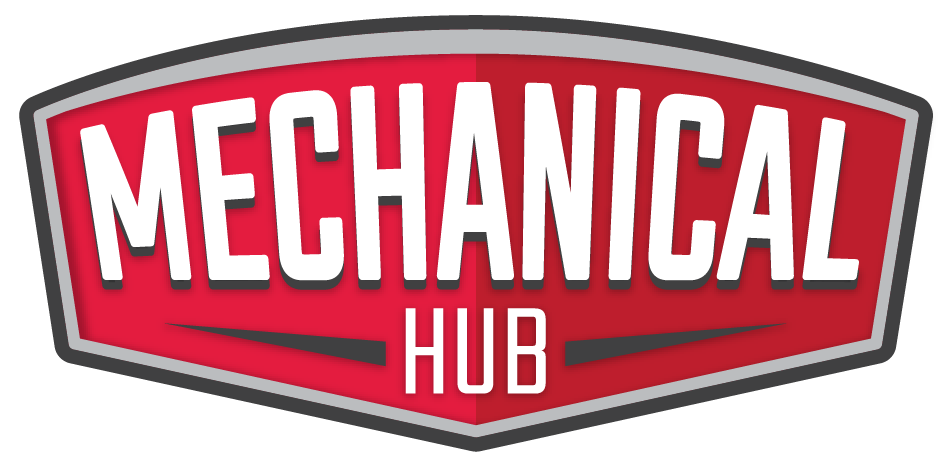
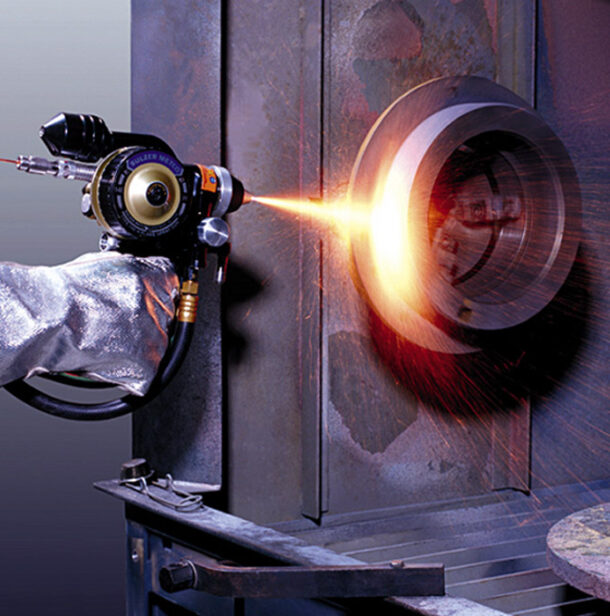 Plasma Spraying: Explained
Plasma Spraying: Explained